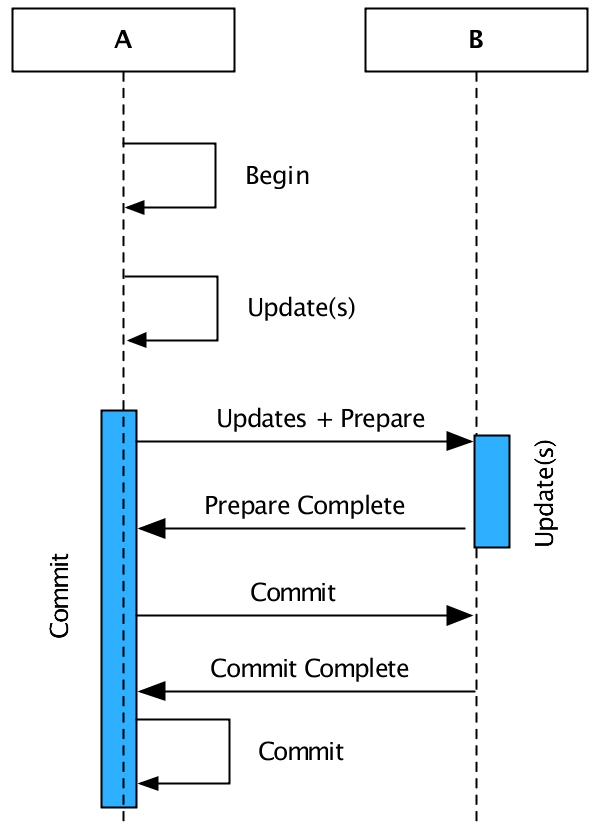By default, all distributed object updates use a deferred write protocol. The deferred write protocol defers all network I/O until the commit phase of a transaction. This allows the batching of all of the object updates, and the prepare request, into a single network I/O for each node, improving network performance. The size of the network buffer used for the network I/O is controlled in the distribution configuration. See the TIBCO BusinessEvents® Extreme Administration for details on distribution configuration.
The deferred write protocol is shown in Figure 6.2, “Deferred write protocol” for two nodes.
Notice that no transaction locks are taken on node
B as distributed objects are modified on node
A until the prepare step.
![[Note]](images/note.png) | |
Distributed object creates and deletes perform network I/O immediately, they are not deferred until commit time. There is no prepare phase enabled for these transactions. See Figure 5.1, “Distributed transaction”. |
The deferred write protocol is disabled if a method call is done on a distributed object. Any modifications to the distributed object on the local node are flushed to the remote node before the method is executed on the remote node. This ensures that any updates made on the local node are available on the remote node when the method executes.
After the method executes on the remote node any modifications on the remote node are copied back to the initiating node. This ensures that the data is again consistent on the local node on which the method was originally executed.
The deferred write protocol can be disabled in the high availability configuration. In general, it should be enabled. However, if an application only accesses object fields using accessors, instead of directly accessing fields, it will be more performant to disable the deferred write protocol since no modifications are ever done on the local node. See the TIBCO BusinessEvents® Extreme Administration for details on high availability configuration
